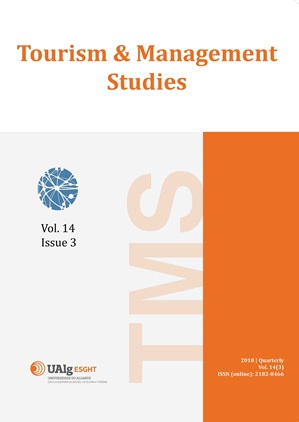Managing Intangibles Relational Capital for the sustainability of the Energy Sector in the Social Media
Keywords:
Emotion, Digital Influencers, Intangibles Management, Reputational Intelli-gence, Social MediaAbstract
Various management models have been proposed for intangible business assets in this new digital era. However, these models do not contemplate the relationships of intangible assets in the business management, neither their impact between them. This work has two main objectives; first, to show the impact of the intangible assets that are expressed on digital media over the energy brands; and second, to prove the relationships between the emotions and experiences and the attitude of these audiences. In order to do so, a novel intangibles model is proposed, and applied over the energy sector of the IBEX35. In this scenario, we have determined that user’s experiences extracted from digital environments significantly have relationships one of the most important intangibles in its business, namely the emotion.
References
Bernal, R., Karanik, M., & Peláez, J.I. (2015). Fuzzy measure identification for criteria coalitions using linguistic information. Soft Computing, 20(4), 1315-1327. Doi: 10.1007/s00500-015-1589-5.
Best, R.J. (2007). Marketing Estratégico. Madrid: Pearson Educación.
Carreras, E., Alloza, A., & Carreras, E. (2013). Reputación Corporativa. Madrid: LID Editorial.
Casado, A.M, & Peláez, J.I. (2014). Intangible Management Monitors and Tools: Trends in the International Companies. Experts Systems with Application, 41(4), 1509-1529.
Casado, A.M., Méndiz, A., & Peláez, J.I. (2013). The evolution of Dircom: from communication manager to reputation strategist. Communication & Society, 26(1), 47-66.
Celaya, J. (2008). La empresa en la Web 2.0. Madrid: Gestión 2000.
Daum, J. H. (2002). Intangible Assets and Value Creation. Chichester: John Wiley & Sons.
Edvinsson, L., & Malone, M. (1997). Intellectual Capital: Realizing your company’s true value by finding its hidden brainpower. New York: Happer Collins.
Fishbein, M., & Ajzen, I. (1975). Belief, Attitude, Intention, and Behavior: An Introduction to Theory and Research. Reading, Massachusetts: Addison-Wesley.
Fombrun, C.J., & Riel van, C.B.M. (2004). Fame & Fortune. How successful companies build winning reputations. New York, Pearson Education.
Frooman, J. (1999). Stakeholders influence strategies. Academy of Management Review, 24(2), 191-205.
Li, C., & Bernoff, J. (2008). Groundswell: Winning in a world formed by social technologies. Boston: Harvard Business Press.
MacMillan, K., Money, K., & Downing, S.J. (2000). Successful business relationships. Journal of General Management, 26(1), 69-83 (2000).
Millar, C., Hind, P. & Maga, S. (2012). Sustainability and the need for change: organizational change and transformational vision. Journal of Organizational Change Management, 25(4), 489-500.
Miller, G. (1956). The Magical Number Seven, Plus or Minus Two. The Psychological Review, 63, 81-97.
Money, K., & Hillenbrand, C. (2006). Using Reputation measurement to create value: An analysis and integration of existing measures. Journal of General Management, 3(1), 1-12.
Nonaka, I., & Takeouchi, H. (1995). The Knowledge-Creating Company: How Japanese Companies Create the Dynamics for Innovation. New York: Oxford University Press.
Nonaka, I. ((1994). A Dynamic Theory of Organizational Knowledge Creation. Organization Science, 5(5), 14-37.
O’Really C., Chatman, J., & Caldwell, D.F. (1991). People and Organizational culture: A profile Comparison approach to assessing person-organization fit. Academy of Management Journal, 34(3), 487-516.
Peláez, J.I., Bernal, R., & Karanik, M. (2014). Majority OWA operator for opinion rating in social media. Soft computing, 20(3), 1047-1055.
Plutchik, R. (1980). Emotion: Theory, research, and experience, Vol. I - Theories of emotion. New York: Academic Press.
Ritter, M. (2009). La complejidad de las organizaciones en el mundo globalizado y el nuevo rol del Dircom. In J. Costa (eds) Dircom, Estratega de la Complejidad. Nuevos paradigmas para la Dirección de Comunicación (pp. 65-75). Barcelona: Servei de Publicacions de la Universitat Autónoma de Barcelona.
Roberson, Q. M., & Park, H. J. (2007). Examining the link between diversity and firm performance: The effects of diversity reputation and leader racial diversity. Group & Organization Management, 32, 548-568.
Schau, H.J., & Gilly, M.C. (2003). We are what we post? Self-presentation in personal web space. Journal of Consumer Research, 30(3), 385-404.
Waddock, S. (2002). The multiple bottom lines of corporate citizenship: Social investing, reputation, and responsibility audits. Business and Society Review, 105, 323-345.
Zink, K.J. (2005). Stakeholder orientation and corporate social responsibility as a precondition for sustainability. Total Quality Management and Business Excellence, 16(8-9), 1041-1052.
Downloads
Published
Issue
Section
License
Copyright (c) 2018 Tourism & Management Studies

This work is licensed under a Creative Commons Attribution-NoDerivatives 4.0 International License.
The journal retains published articles’ copyrights, but they are simultaneously licensed under the Creative Commons Attribution License (CC BY-NC-ND), which allows individuals’ to share the relevant papers as long as authorship and publication in this journal are duly acknowledged.



